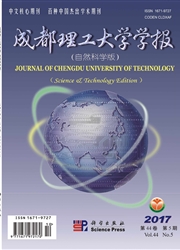

 中文摘要:
中文摘要:
探讨广州市从化区流溪河水库建库以来50多年沉积环境和沉积物来源的空间差异及其演变过程。以流溪河水库不同区域的4个沉积柱为研究对象,利用端元模型分析粒度组分,结果显示:(1)河流搬运是流溪河水库的主要沉积物来源,从入库河流至水库大坝,沉积物颗粒由粗变细,说明水动力逐渐减弱。(2)入库口主要受河流搬运营力的影响;库湾区远离入库口,水动力较弱,以悬浮沉积为主;过渡区受水动力和建库初期原地沉积再搬运、再沉积的共同作用,经历了受多个物源的共同影响到单一河流占主导的演变过程。(3)建库以来,流溪河水库沉积速率呈现“高-低-高-低”的演变进程,与流域内降水量和土地利用的变化相关。水库沉积物组成存在明显的空间分区,且随水库环境演变而发生变化。
 英文摘要:
英文摘要:
In order to demonstrate the spatial pattern and temporal variation of the sedimentary environment and the sediment source in the past 50+ years since the impoundment of the Liuxihe reservoir in Guangzhou,this paper examines the grain size compositions of four sedimentary columns and analyzes the results with end-member modeling.The results reveal that(1)Fluvial transportation contributes the most sediments all the time,and the grain size decreases from the inflow river to the reservoir dam,indicating a weakening of the hydrodynamic force;(2)The gain size pattern in the riverine zone is mainly determined by hydrodynamics of the inflowing river,while in the reservoir bay,the sediments originate mostly from suspended loads and deposit only under a weak watermovement.However,the sediment source in the transitional zone has undergone a change from multiple origins to mostly river transportation due to a change in the controlling hydrodynamic force and the sediment redeposition at the early stage of the reservoir;(3)The "high-low-high-low"variation pattern in sedimentation rates during the maturation of the reservoir possibly result from the changes in precipitation and land use in the catchment.These indicate that there exists a clear spatial zonation in the composition of the reservoir sediments and the zonation changes as the reservoir environment evolves.
 同期刊论文项目
同期刊论文项目
 同项目期刊论文
同项目期刊论文
 How important are trophic state, macrophyte and fish population effects on cladoceran community? A s
How important are trophic state, macrophyte and fish population effects on cladoceran community? A s 期刊信息
期刊信息
